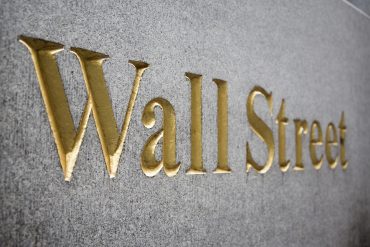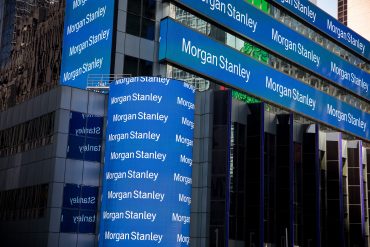
- Federal Reserve
- Stock Market
Wall Street Gains as Inflows Hit $1.8B in Market Rotation
6 minute read

Stock market investors pour $1.8 billion into diverse sectors as Bank of America sees broadest market participation since 2023
Key Takeaways
- $1.8 billion in equity inflows at Bank of America last week reversed three weeks of selling, with the S&P 500 gaining 0.6% as investors show renewed appetite for risk assets across multiple sectors.
- Treasury Secretary Bessent demands Fed investigation amid escalating tensions with Jerome Powell, questioning the central bank’s effectiveness and accusing officials of “fear-mongering” over tariff-driven inflation concerns.
- Industrial sector sees historic inflows ranking in the 97th percentile since March 2015, signaling investor rotation from defensive utilities into cyclical growth opportunities as market breadth expands beyond mega-cap technology.
Introduction
Bank of America Securities reports a decisive shift in client investment patterns as equity inflows surge across multiple sectors, coinciding with fresh market highs and intensifying political pressure on Federal Reserve leadership. Net purchases of U.S. equities reached $1.8 billion last week, marking the strongest buying activity since a three-week selling streak began.
The broad-based rally extends beyond traditional technology leaders, with industrial and financial sectors attracting substantial capital flows. This market breadth expansion occurs as Treasury Secretary Scott Bessent escalates criticism of the Federal Reserve, demanding a comprehensive investigation into the central bank’s operations and effectiveness.
Key Developments
Private clients demonstrate consistent confidence in equity markets, recording inflows in 30 of the past 32 weeks. Hedge funds joined the buying trend for the second consecutive week, while institutional clients maintained their selling pattern with outflows occurring 10 times in the last 11 weeks.
The Industrial sector captures particular attention with inflows over two weeks representing the second-largest in Bank of America’s historical data. These purchases rank in the 97th percentile when adjusted for sector market capitalization, indicating exceptional institutional interest in cyclical growth opportunities.
Meanwhile, defensive sectors face sustained selling pressure. Utilities experience their ninth consecutive week of outflows, posting the largest weekly decline since October 2023. Energy stocks endure their fifth straight week of net selling, while Consumer Discretionary faces the heaviest sector-wide outflows during the reporting period.
Market Impact
The S&P 500 advances 0.6% as market participation broadens beyond mega-cap technology names. Exchange-traded funds maintain positive flows for the 13th consecutive week, with value, growth, and blend investment styles all attracting purchases from institutional and retail investors.
Financial sector stocks gain momentum following strong quarterly earnings reports from major banking institutions. Large-cap and small-cap ETFs both record positive inflows, though mid-cap funds experience modest outflows as investors gravitate toward size extremes in their portfolio allocations.
Technology ETFs continue facing headwinds with the largest sector outflows for three consecutive weeks. Healthcare and Consumer Discretionary ETFs attract the strongest investor interest, reflecting portfolio rotation toward sectors with defensive characteristics and consistent earnings visibility.
Strategic Insights
The investment flow patterns reveal a fundamental shift from concentrated mega-cap technology dependence toward diversified sector participation. This broader market engagement reduces concentration risk and signals increased confidence in economic fundamentals across multiple industries.
Corporate buyback activity increases following earnings season commencement, though levels remain below typical seasonal patterns for the third consecutive week. Technology companies pursue strategic diversification through manufacturing reshoring and productivity enhancement initiatives, reducing supply chain vulnerabilities while capitalizing on government incentive programs.
Record information technology spending projections reach $5.75 trillion in 2025, representing 9.3% growth over current levels. Banks allocate over 10% of revenues toward technology investments, with global banking IT expenditure growing at a 9% compound annual rate as artificial intelligence and cloud infrastructure drive transformation initiatives.
Expert Opinions and Data
Treasury Secretary Scott Bessent sharply criticizes Federal Reserve operations, telling CNBC’s “Squawk Box” that comprehensive institutional review is necessary. “What we need to do is examine the entire Federal Reserve institution and whether they have been successful,” Bessent states, comparing the proposed investigation to safety reviews at the Federal Aviation Administration.
Bessent accuses the central bank of “fear-mongering” over tariff-related inflation risks, noting that annual inflation measures 2.7% in June despite widespread economic warnings. According to Investing.com, Morgan Stanley describes current tariff effects as creating an “idiosyncratic mosaic” with potential to generate $2.7 trillion over the next decade.
JPMorgan Chase CEO Jamie Dimon emphasizes that central bank independence remains “absolutely critical” for market stability. Senate Majority Leader John Thune reinforces market preference for Federal Reserve autonomy, while Deutsche Bank warns that removing Powell before his term expires could trigger dollar and bond market instability.
Bank of America forecasts the S&P 500 could reach 6,666 by end-2025, supported by robust U.S. economic growth and corporate earnings expansion. Technology sector leadership continues driving performance expectations, though broadened market participation reduces single-sector dependency risks that characterized previous rally phases.
Conclusion
Equity market strength reflects genuine broadening of investor participation across sectors, moving beyond narrow technology leadership toward diversified economic exposure. Industrial and financial sector inflows indicate confidence in cyclical growth prospects, while sustained selling in defensive utilities and energy suggests risk appetite remains elevated among institutional investors.
Political tensions between Treasury leadership and Federal Reserve officials introduce policy uncertainty that markets continue monitoring closely. The combination of strong equity flows, expanding market breadth, and robust corporate earnings projections supports continued upward momentum, though central bank independence concerns require careful observation as economic policy dynamics evolve.








